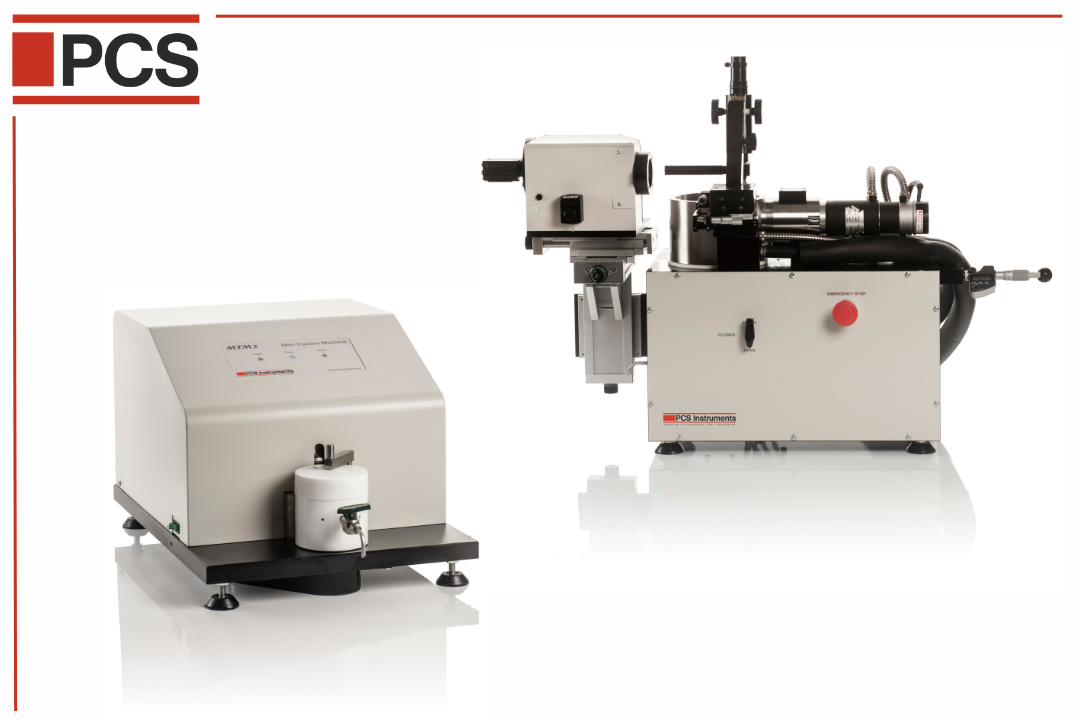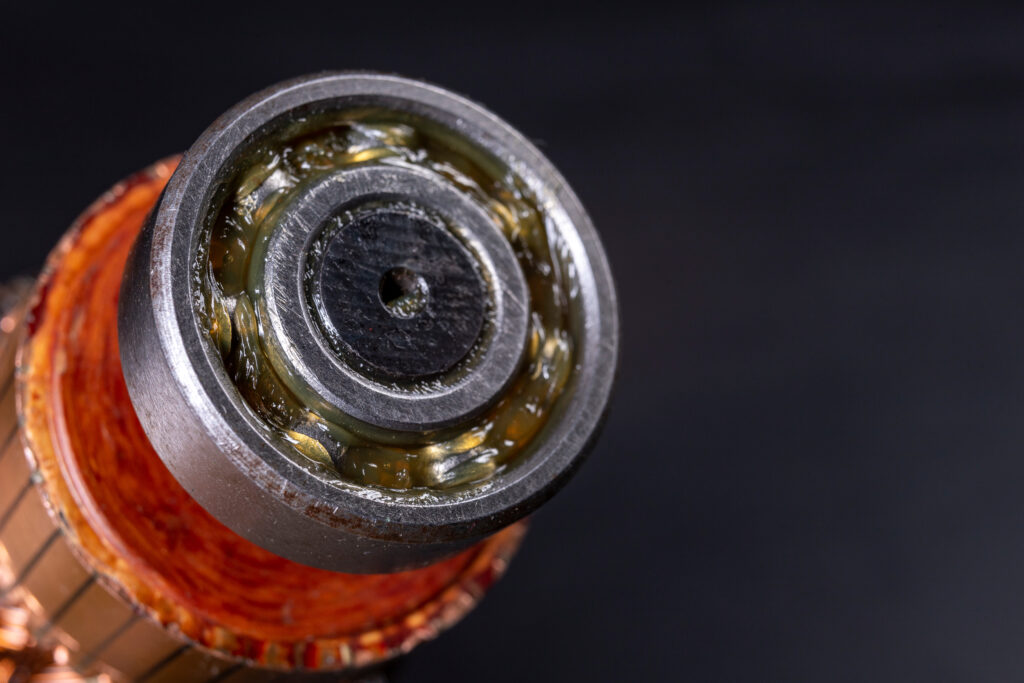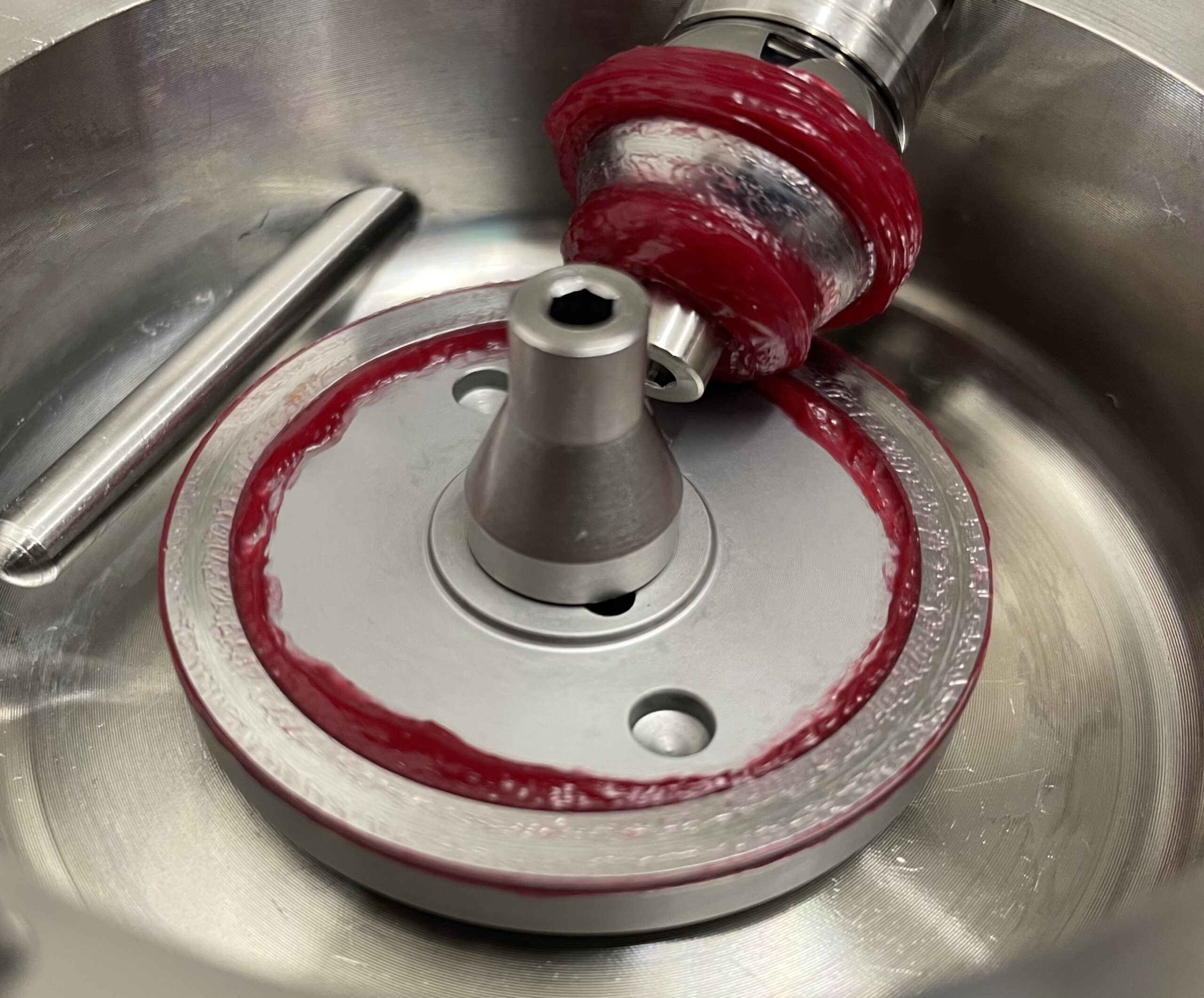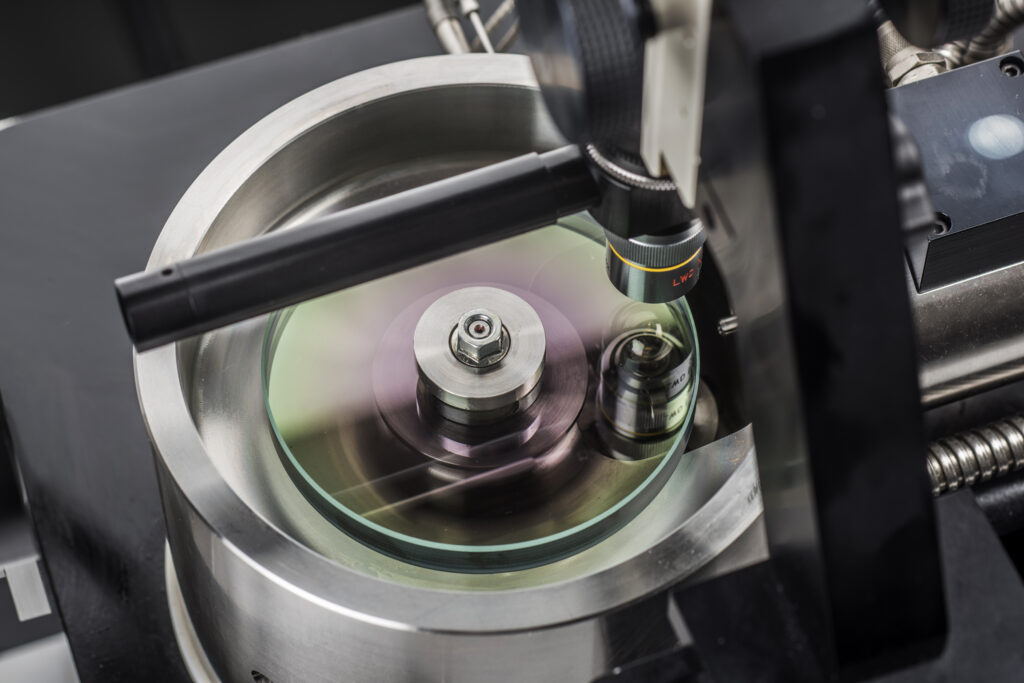Use of MTM and EHD in Grease Research

How can the behaviour of grease lubrication transform the performance and durability of bearings in the industrial landscape? In this literature review, we’re focusing on research using our state-of-the-art MTM and EHD instruments, which have produced fascinating insights into grease’s complex tribological characteristics. Grease lubrication is a key component in the functions of bearings, holding the key to significant advancements in reducing friction, wear, and ultimately, energy consumption in mechanical systems. This review highlights the intricate dynamics of grease lubrication, exploring how the MTM and EHD have become key facilitators in pioneering research that bridges the gap between theoretical models, and real-world applications. We are always striving to equip our audience with the knowledge to navigate the challenges of grease lubrication, enhance lubricant formulations, and drive forward the efficiency and longevity of mechanical systems.

Grease lubrication plays a pivotal role in the performance and longevity of bearings, the tribological components that underpin the smooth operation of modern industry. Since most bearings are lubricated with grease, a small improvement in the frictional or fatigue performance provided by the grease can create huge reductions in energy consumption. A grease containing base oil, a thickener, as well as any additives, can exhibit very different behaviour to the base oil alone. The semi-solid grease shear-thins significantly, reducing to the base oil viscosity at high shear rates, but at low shear rates behaves like a solid with a yield stress that prevents flow under a critical stress. The thickener, which forms a distributed network within the oil matrix, can be degraded during operation, changing behaviour significantly, and this can depend greatly on the specific composition of the grease. This makes it significantly more complex to study than oil lubrication, having chaotic behaviour in rolling bearings [1] and challenging efforts to model it analytically or numerically.

The PCS Instruments’ MTM and EHD rigs have prominently featured in the research of grease lubrication since their release. At low speeds, a grease-lubricated contact entrains more thickener, leading to greatly elevated film thickness compared to the base oil, an observation found by many researchers investigating grease film thickness with the EHD rig [2], [3], [4], [5], [6], [7]. The thickener can be deposited as a solid or highly viscous layer in the rolled path of a tribological contact, as found by Hurley [8] and Cann [9], using an MTM and analysing the disc post-test using infrared spectroscopy. This deposited layer could potentially protect surfaces in the boundary lubrication regime. The MTM SLIM has also been used by Kanazawa et al [10] directly to measure the thickness of the highly viscous thickener layer during a test, the authors finding that the thickness of this layer was predominantly influenced by thickener type, and not base oil viscosity or test temperature.
There is a corresponding decrease in friction that is seen with greases at low speed, sometimes termed the ‘Inverse-Stribeck’ effect, which has been observed many times by researchers using the MTM to investigate grease friction [11], [12]. De Laurentis conducted friction tests of a range of greases and found that a low-viscosity synthetic base oil delivers low friction at high speeds, while the thickener type has the dominant effect at low speeds, with lithium and polyurea thickeners showing lowest friction [13].

Two important influences on the friction and wear of a grease-lubricated component are the effects of starvation and lubricant degradation. As grease is semi-solid and has a yield stress, the contact is at risk of being starved of lubricant if there is insufficient reflow. This effect has been studied in detail on the EHD rig. Damiens et al found that the addition of a bearing cage around the EHD ball specimen can significantly boost film thickness, and the clearance can be critical in determining this effect [14]. Cann and Lubrecht found that by introducing a spin to the ball, as is likely to occur in a real bearing, the lubricant supply can be maintained [15]. The effect of grease aging, both thermal effects and shear degradation, has also been found to control grease starvation, in some cases improving resistance to starvation [16] and in other cases increasing starvation [17].
The MTM and EHD, as single-contact ball-on-disc test instruments, provide a simple and effective model for the complex behaviour of grease-lubricated bearings. They enable in-depth analysis of lubrication processes and the impact of individual variables, unlike the precise but opaque outcomes from bearing tests. The methods are complementary but, crucially, the ball-on-disk methodology has been found to correlate with bearing tests and display similar trends [18].
The research presented here and facilitated by PCS Instruments’ MTM and EHD machines, helps deepen our understanding of the complex behaviours of grease under varying conditions. These investigations reveal how the unique properties of grease – ranging from its viscosity and shear-thinning characteristics to the effects of thickener composition and degradation – can dramatically impact friction, wear, and energy efficiency in mechanical systems. By collating this research, we aim to equip lubricant buyers and researchers with actionable insights, enabling the development of more effective lubricant formulations and maintenance strategies.
References
[1] P. M. Lugt, S. Velickov, and J. H. Tripp, “On the Chaotic Behavior of Grease Lubrication in Rolling Bearings,” Tribol. Trans., vol. 52, pp. 581–590, 2009, doi: 10.1080/10402000902825713.
[2] D. Fischer, H. Mues, G. Jacobs, and A. Stratmann, “Effect of Over Rolling Frequency on the Film Formation in Grease Lubricated EHD Contacts under Starved Conditions,” Lubricants, vol. 7, no. 2, p. 19, 2019, doi: 10.3390/lubricants7020019.
[3] D. Fischer, G. Jacobs, A. Stratmann, and G. Burghardt, “Effect of Base Oil Type in Grease Composition on the Lubricating Film Formation in EHD Contacts,” Lubricants, vol. 6, no. 2, p. 32, Apr. 2018, doi: 10.3390/lubricants6020032.
[4] D. Gonçalves, B. Graça, A. V. Campos, J. Seabra, J. Leckner, and R. Westbroek, “On the film thickness behaviour of polymer greases at low and high speeds,” Tribol. Int., vol. 90, pp. 435–444, May 2015, doi: 10.1016/j.triboint.2015.05.007.
[5] D. Gonçalves, A. Vieira, A. Carneiro, A. V. Campos, and J. H. O. Seabra, “Film Thickness and Friction Relationship in Grease Lubricated Rough Contacts,” Lubr. 2017, Vol. 5, Page 34, vol. 5, no. 3, p. 34, Aug. 2017, doi: 10.3390/LUBRICANTS5030034.
[6] D. E. P. Gonçalves, A. V. Campos, and J. H. O. Seabra, “An Experimental Study on Starved Grease Lubricated Contacts,” Lubricants, vol. 6, no. 3, Sep. 2018, doi: 10.3390/LUBRICANTS6030082.
[7] B. Vengudusamy, M. Kuhn, M. Rankl, and R. Spallek, “Film Forming Behavior of Greases Under Starved and Fully Flooded EHL Conditions,” Tribol. Trans., vol. 59, no. 1, pp. 62–71, 2016, doi: 10.1080/10402004.2015.1071450.
[8] S. Hurley and P. M. Cann, “Infrared Spectroscopic Characterisation of Grease Lubricant Films on Metal Surfaces,” NLGI Spokesm., vol. 64, no. 7, pp. 13–21, 2000.
[9] P. M. Cann, “Grease degradation in a bearing simulation device,” Tribol. Int., vol. 39, pp. 1698–1706, 2006, doi: 10.1016/j.triboint.2006.01.029.
[10] Y. Kanazawa, R. S. Sayles, and A. Kadiric, “Film formation and friction in grease lubricated rolling-sliding non-conformal contacts,” Tribol. Int., 2017, doi: 10.1016/j.triboint.2017.01.026.
[11] Y. Kanazawa, N. De Laurentis, and A. Kadiric, “Studies of Friction in Grease-Lubricated Rolling Bearings Using Ball-on-Disc and Full Bearing Tests,” Tribol. Trans., vol. 63, no. 1, 2019, doi: 10.1080/10402004.2019.1662147.
[12] P. M. Cann, “Grease lubrication of rolling element bearings — role of the grease thickener,” Lubr. Sci., no. April, pp. 123–134, 2007, doi: 10.1002/ls.39.
[13] N. De Laurentis, A. Kadiric, P. M. Lugt, and P. M. Cann, “The influence of bearing grease composition on friction in rolling/sliding concentrated contacts,” Tribol. Int., vol. 94, pp. 624–632, 2015, doi: 10.1016/j.triboint.2015.10.012.
[14] B. Damiens, A. A. Lubrecht, and P. M. Cann, “Influence of Cage Clearance on Bearing Lubrication,” Tribol. Trans., vol. 47, no. 1, pp. 2–6, 2004, doi: 10.1080/05698190490279128.
[15] P. M. Cann and A. Lubrecht, “Bearing performance limits with grease lubrication: the interaction of bearing design, operating conditions and grease properties,” J. Phys. D Appl. Phys, vol. 40, pp. 5446–5451, 2007, doi: 10.1088/0022-3727/40/18/S05.
[16] J.-S. Merieux, S. Hurley, A. A. Lubrecht, and P. M. Cann, “Shear-degradation of grease and base oil availability in starved EHL lubrication,” Thinning Film. Tribol. Interfaces, vol. 38, pp. 581–588, 2000, doi: 10.1016/S0167-8922(00)80162-5.
[17] S. Hurley, P. M. Cann, and H. A. Spikes, “Lubrication and Reflow Properties of Thermally Aged Greases,” Tribol. Trans., vol. 43, no. 2, pp. 221–228, 2000, Accessed: Oct. 11, 2017. [Online]. Available: http://www.tandfonline.com/doi/pdf/10.1080/10402000008982332?needAccess=true
[18] H. Baly, G. Poll, P. M. Cann, and A. A. Lubrecht, “Correlation between model test devices and full bearing tests under grease lubricated conditions,” Solid Mech. its Appl., vol. 134, pp. 229–240, 2006, doi: 10.1007/1-4020-4533-6_16.
With expert contribution by Dr Rory McAllister:

To learn more about the instruments used in the research for this literature review, follow the links below: 👇
– MTM
– EHD
To stay updated with the newest industry insights through our articles and news, click here!
